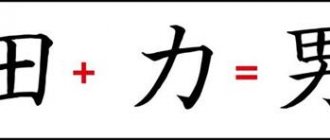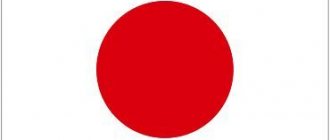| « | Kawaii are tsunderia boys with horns who are dressed in maid costumes and then raped | » |
| — From the archives of the channel about FreeBSD | ||
"Kawaii" clothes
Kawaii
(moon. 可愛い, romaji: kawaii, usually pronounced with the accent on the last syllable) is the Japanese version of the word "cute". It is used, as a rule, among animufages, both in relation to animated things and IRL.
This is a parasitic word, one of the first that a beginning anime poser learns. Therefore, excessive use of this word is considered bad manners among otakus. In similar cases, otaku themselves use words like “moe”, “NGGGGGGGRRRRRRRRHHHH!!!” or simply expressed in the language adopted in their country.
[edit] "Kawaii" vs "Kawaii"
Kawaii and ecchi in one bottle
It would be too difficult for animophagists to speak correctly, so they turned to the help of the great and mighty Russian language and simply made the adjective “kawaii” into the noun “kawaii”, while the grammar of the Japanese language played the last role, we guarantee This. As a result, the words “kawaii”, “kawainko”, “kawaii” (“I love him so much!”) and the like appeared.
True, from the point of view of the Japanese language, “kawai” as the root of the word is also completely logical, since the additional “and” (かわいい
) here only denotes an adjective, and is changed accordingly - “non-kawaii” will be “kawaikunai” (かわいくない), “kawaiiness” will be “kawaisa” (かわいさ), “kawainy” will be “kawairasi” (かわいらしい), “kawai” will be “ kawaiigaru" (かわいがる), etc. It should, however, be o (かわいそう) means exclusively "poor", "unhappy", and has an indirect relation to kawaii.
Etymology[ | ]
Kawaii
word spelling (from top to bottom): Kanji, Hiragana and Katakana
According to the assumption, it comes from the contraction of the ancient pronunciation “kawayuy” or the word “kaohayushi” (Japanese 顔映ゆし) and is ateji, that is, it did not come from the Chinese word “cute” (Chinese trad. 可愛, ex. 可爱, pinyin kě'ài, pal. keai) [20]. The word "kawaii" is written with two kanji: 可, when read on'yomi, is read as "ka" and means "to be worthy of something"; and 愛, when read on'yomi, is read as "ai" and means "love"[21][22]. Their combination means "pretty, sweet, nice, adorable, tiny." When combining two kanji, the reading of the second kanji changes to "wai" to avoid the phonetic effect of pronouncing two "a"s in a row (ka-ai), as this is not common in Japanese[23]. The last character in a word, "-い" (-i), is the ending of a predicative adjective, one of the three classes of Japanese adjectives, along with semi-predicatives ending in "-の" (-no) or "-な" (-na), and Chinese ending in “-的” (-teki).
Also, the term "kawaii" has an alternative, archaic reading of "kawaii". From this word comes the words "kawairashi" (可愛らしい), an adjective that can be translated as "cute", "pretty", "tiny"; "kawaigaru" (可愛がる), a verb that translates to "to love", "caress", "pamper", "to be affectionate with someone" or "kawaige" (可愛げ), a word that means "charming an innocent child" [21].
In Old Japanese, affection was described by the term "utsukushi" (愛し), which has the same meaning as the word "kawaii".
[edit] Kawaii IRL
[edit] Kawaii clothes
An example of a kawaii form.
Recently, kawaii clothing (sweatshirts with animal ears on the hoods, skirts with ponytails and other similar details) have become popular in this country. It is worn mainly by glamorous kitties who have fallen into childhood, ladies of a special mindset and subtle female connoisseurs. It looks something like this: skinny jeans with a flabby cellulite “tummy” hanging from them, and on top a pink or blue blouse with bunny ears down to the lower back, and all this gracefully harmonizes with the collective farm physiognomy, which periodically exhales - ! (get the kids away from the screen, they feel bad). In fact, here are typical phrases from these customers:
| Please tell me where to buy a cute tracksuit (42-44, velor) or just a jacket with a hood with bunny ears. I dream of such home clothes... |
Historically, kawaii clothing appeared in Rus', the hat with earflaps is proof of this, nya!
[edit] Kawaii on television
In March 2009, the word “kawaii” was actively promoted by the vile channel EmpTiVi, as a synonym for the word “sexy”. The proof can be found in the recording of the program “Top 10 most kawaii (in the original “sexual”) women,” and there was also “Kawaii charms of Victoria's Secret.” Fucking hardcore facepalm. The Japanese channel NHK continues to air a program that is slightly less than entirely dedicated to kawaii.
TVtropes has its own opinion on the topic of "being kawaii"
Also, on children's channels, patients in kindergartens are heavily pushed into the products of a certain Japanese company with the same name, which produces all sorts of different cute things in the form of toys, so the phrase “Kawaii cute” has quite a tangible embodiment in the form of products from this factory. It’s easy to recognize the advertisement – in it several nasty thin female voices squeal the word “Kawaaaaaaaaaaaaaaaaaaaaaaaaaaaaaaaaaaaaaaaaaaaaaaaaaaaaaaaaaaaaaaaaaaaaaaaaaaaaaaaaaaaaaaaaaaaaaaaaaaaaaaaaaaaaaaaaaaaaaaaaaaaaaaaaaaaaaaaaaaaaaaaaaaaaaaaaaaaaaaaaaaѣr.html.....and some other word apparently in Japanese”
Anime influence
Now it's clear what "desu" means in Japanese. The earliest commercial Japanese animation dates back to 1917, and Japanese anime production has continued to grow steadily since then. The distinctive style of anime art emerged in the 1960s with the work of Osamu Tezuka and spread internationally in the late twentieth century. This genre is shown in theaters, on television, advertised in the media, and also via the Internet. It is divided into numerous sub-genres aimed at different broad and targeted audiences.
[edit]Also
Nya-music!
- There is also a racial Japanese artel “Kawai”, which produces completely vintage grand pianos and electric pianos. In addition, it used to produce winrar kawaii guitars (For example, in the form), and now it produces good bass guitars under the Rockoon brand.
- Kenji Kawai is a racial Japanese composer, who has made a splash in particular for the cartoon “Ghost in the Shell”, “Higurashi no Naku Koro ni”, “Fate/stay night” and the Polish-Japanese “Avalon”.
- Takuma Kawai is a racial Japanese ice hockey player in the third-ranking North American league, the ECHL.
- In Jan Weiss's psychedelic novel The House of a Thousand Floors, there is a serum called KAWAI, which, when injected into the brain, causes a person to lose his mind.
- Kawaii should not be confused with kowai.
- Kavaj means "jacket" in Swedish.
- Janice Kawai is an actress who voices Jenny (XJ-9) in the animated series My Life as a Teenage Robot.
- Kavaino is a village in the Olonets region of the Republic of Karelia.
- Devin Townsend (Strapping Young Lad, The Devin Townsend Band, Devin Townsend Project) sings about this kawaii of yours in one of the songs. Devin Townsend Project - Kawaii.
- Somewhere in this country there is a grindcore band called Kawaii Guts, delivering with song titles and raw guttural
- In one of the splash pool channels there was a program “Kawai!” with the fabable Louise Bourgoin as the host.
- NBA player for the San Antonio Spurs - Kawhi Leonard, pronounced "Kawhi".
Kawaii Lolita style in the interior
At first glance, this room may seem like it belongs to a little girl. But you might be surprised to learn that this is the bedroom of a fully grown woman. A woman who prefers Lolita style. By the way, there is still debate about where the name came from. Either from Japanese comics, or from Nabokov's Lolita.
But, nevertheless, this style - one of the kawaii styles - is becoming very popular in the world and affects not only fashion in clothing, but also the entire lifestyle of young women - in particular, the interior.
Lolita can be different - classic, romantic, gothic, country... But all these Lolitas have one thing in common - the aesthetics of a cute and doll-like interior.
Classic Lolita
The room in the kawaii style is decorated with furniture and decor not only of the classical style, but also with antique, vintage wardrobes, chests of drawers, armchairs and sofas. Sideboards with porcelain (delicately doll-like) dishes and small coffee tables made of natural dark wood are mandatory elements in the interior.
The decor and textiles of this style include light, blue, beige, sand, and cream colors.
Romantic or sweet Lolita
Romantic Lolita is expressed in white, pastel and pink colors and shades.
A riot of lace, bows, gilded details, vintage (or shabby chic) light wood furniture, floor lamps and lamps with ruffles or fringes.
Among the furniture, interesting “aliens” from Japan are the usagi chair and the kotatsu (cat’s paws) table, which can be covered with a special kotatsu set.
Gothic Lolita
In Gothic Lolita we will find black lacquered furniture, tapestries, heavy purple or violet velvet curtains, soft carpets, elegant chandeliers...
Mirrors in dark frames and other decor typical of the Gothic style.
[edit] Gallery
- Spherical kawaii in a vacuum.
- Communism also fits the definition of kawaii.
- Lakistar is a little more than completely Kavaen.
- When we say “kawaii,” we mean it. We say Ayu - we mean “kawaii”.
- When we say "kawaii" we mean "Kawai".
- Lax Klein, from Gundam. No comments.
- Racially imperial kawaii.
- Kawaino? Cheesy!
- And even T-34-chan...
- Typical trace of a redneck
- Application NGGGGGGRRRRRRRRHHHH!!
- Soul, soul in the eyes
- This is also kawaii.
Notes[ | ]
- ↑ 1 2 Neverov S.V., Popov K.A., Syromyatnikov N.A.
and others. Large Japanese-Russian dictionary. - M.: Soviet Encyclopedia, 1970. - T. 1. - P. 299. - 808 p. — 26,000 copies. - Zarubin S.F., Rozhetskin A.M.
Large Russian-Japanese dictionary. - M.: Living Language, 1998. - P. 338. - 896 p. — 1550 copies. - New Japanese Russian Dictionary / ed. Seigo Hatoyama, Zotova P. O. - M., 2011.
- Yomota, 2021.
- 可愛い(かわいい) — 語源由来辞典
- The Japanese Self in Cultural Logic
Archived April 27, 2021, by Takei Sugiyama Libre, c. 2004 University of Hawaii Press, ISBN 0-8248-2840-2, p. 86. - What is kawaii — and why did the world fall for the 'cult of cute'?
- "kawaii Archived November 28, 2011.", Oxford Dictionaries Online
. - かわいい - kawaii - 可愛い - cute Japanesefile. Accessed May 7, 2011 from https://japanesefile.com/Adjectives/kawaii_3.html Archived August 18, 2011.
- Kim, T. Beautiful is an Adjective. Accessed May 7, 2011, from https://www.guidetojapanese.org/adjectives.html Archived September 28, 2011.
- Álvarez, Jesús Carlos y Toru Katsuta. Español-Japonés Japonés-Español
. Segunda edition. 2005. Barcelona. Editorial Juventud. - Diana Lee, "Inside Look at Japanese Cute Culture Archived October 25, 2005." (September 1, 2005).
- Richie, Garner S. 54
- Okazaki, Manami and Johnson, Geoff (2013). Kawaii!: Japan's Culture of Cute
. Prestel, p. 8. - Marcus, Aaron, 1943.
Cuteness engineering: designing adorable products and services. — 2017-10-30. — ISBN 9783319619613. - Sun Jung.
Korean Masculinities and Transcultural Consumption: Yonsama, Rain, Oldboy, K-Pop Idols. - Hong Kong University Press, 1 November 2010. - P. 165. - ISBN 978-988-8028-66-5. - Christian Utz.
Vocal Music and Contemporary Identities: Unlimited Voices in East Asia and the West / Christian Utz, Frederick Lau. - Routledge, 2013. - P. 279. - ISBN 978-0-415-50224-5. - Template:Article
- Puzar, Aljosa; Hong, Yewon (2018). “Korean Cuties: Understanding Performed Winsomeness (Aegyo) in South Korea.” The Asia Pacific Journal of Anthropology
.
19
(4): 333–349. DOI:10.1080/14442213.2018.1477826. - 三省堂.
可愛い (Japanese). 大辞林. Access date: December 28, 2013. - ↑ 1 2
Jim Breen.
The EDICT Dictionary File
. - Japanese-Russian electronic dictionary Warodai (undefined)
.
warodai.ru
. Date accessed: April 25, 2021. - Heisig, James W. Kanji para recordar II
. 2004. Barcelona. Editorial Herder. - ↑ 1 2 Kawaii
, ¿cuál es su significado profundo?
Nipponia
. Nº 40. 15 de marzo de 2007. ISSN 1343—1226. - Ivanov B. A.
Introduction to Japanese animation. — 2nd ed. — M.: Cinematography Development Fund; ROF "Eisenstein Center for Film Culture Research", 2001. - P. 206. - 396 p. — ISBN ISBN 5-901631-01-3. - ↑ 1 2
Los inicios del fenómeno
kawaii
.
Nipponia
. Nº 40. 15 de marzo de 2007. ISSN 1343—1226. - ↑ 1 2
Creatividad
kawaii
— Los fans decide on imagen de Hello Kitty.
Nipponia
. Nº 40. 15 de marzo de 2007. ISSN 1343—1226. - Los frikis
y lo
kawaii
.
Nipponia
. Nº 40. 15 de marzo de 2007. ISSN 1343—1226. - Lent, 1999, p. 93.
- 単管バリケード(undefined)
.
施工の神様(公式ウェブサイト)
. C4株式会社. Date accessed: September 26, 2021. - 街の工事現場で見かける “アレ” がカプセルトイになった! ポール2本を繋げて設置して遊ぶことができますよ(undefined)
.
Pouch
. youpouch (February 15, 2019). Date accessed: September 26, 2019. - Why not? 好きすぎて本社訪問してき
た(
undefined
) 株式会社アイデム (February 5, 2016). — “もともと、人や車の侵入を防ぐ保安用品には、”単管バリケード”しかありませんでした。( …略…)アニマルガードは、2006年に北海道旭川市の仕事を請けた際、行楽でHome 』という気分になってくれるように作られました。(…略…? |作られたのがカエルガードになります。.” Date accessed: September 26, 2021. - アニマルバリケード(undefined)
.
Qualia [1](公式ウェブサイト)
. 株式会社Qualia(クオリア). Date accessed: September 26, 2021. - Anne Cooper-Chen, Miiko Kodama: Mass communication in Japan
Wiley-Blackwell, 1997 ISBN 0-8138-2710-8 S. 92 - ¿Hasta qué punto es mono lo kawaii
?
- Otra clave para la armonía. Nipponia
. Nº 40. 15 de marzo de 2007. ISSN 1343—1226. - ↑ 123
Yuri Kageyama. "Cuteness is a hot-selling commodity in Japan." Associated Press. 14 December 2006. - Japón ¿un país “mono”? Nipponia
. Nº 40. 15 de marzo de 2007. ISSN 1343—1226. - ¿Hasta qué punto es mono lo kawaii
?
— La educación infantil en un Japón obsesionado por lo kawaii
.
Nipponia
. Nº 40. 15 de marzo de 2007. ISSN 1343—1226. - (Kataoka, 2010)
- ↑ 1 2
Tadao, T. (n.d.).
"Dissemination of Japanese Young Fashion and Culture to the World-Enjoyable Japanese Cute (Kawaii) Fashions Spreading to the World and its Meaning." Sen-I Gakkaishi
, 66(7), pp. 223-226. Retrieved from: https://search.ebscohost.com/ Archived December 2, 2011. - Brown, J. (2011). Re-framing "Kawaii": Interrogating Global Anxieties Surrounding the Aesthetic of 'Cute' in Japanese Art and Consumer Products. International Journal of the Image, 1(2), 1. Retrieved from: https://search.ebscohost.com/ Archived December 2, 2011.
- [1]A-Bian Family. https://www.akibo.com.tw/home/gallery/mark/03.htm Archived April 26, 2012.
- Chuang, Y. C. (2011, September). "Kawaii in Taiwan politics". International Journal of Asia-Pacific Studies
, 7(3). 1-16. Retrieved from here Archived May 15, 2019. - [2]All things Kawaii. https://www.allthingskawaii.net/links/ Archived November 26, 2011.
- Hao, X., Teh, L.L. (2004). "The impact of Japanese popular culture on the Singaporean youth." Keio Communication Review
, 24. 17-32. Retrieved from: https://www.mediacom.keio.ac.jp/publication/pdf2004/review26/3.pdf Archived April 26, 2012. - ↑ 1 2
Rutledge, B. (2010, October).
I love kawaii. Ibuki
Magazine. 1-2. Retrieved from: https://ibukimagazine.com/lifestyle-/other-trends/212-i-love-kawaii Archived January 31, 2012. - Shearin, M. (2011, October). Triumph of kawaii. William & Mary idea. Retrieved from: https://www.wm.edu/research/ideation/ideation-stories-for-borrowing/2011/triumph-of-kawaii5221.php Archived January 31, 2012.
- https://www.theage.com.au/news/people/cool-or-infantile/2006/06/18/1150569208424.html
- Kawaii culture in the UK: Japan's trend for cute (undefined)
.
BBC News
(24 October 2014). Retrieved October 26, 2014. Archived October 27, 2014.
[edit] See also
- Kavaist
- Nyash
- Nya, death!
| [ + ] ! Otakus know what Kawaii has to do with anime, desu. | |||||||||||||||||||||
| |||||||||||||||||||||
| [ + ] Kawaii has something to do with the land of the rising sun, desu! | |||||||||||||||
| |||||||||||||||
What does “desu” mean among anime fans?
A close meaning of this word is: “Well, is everything clear?” Like any slang for a narrow circle, the “adverb of anime fans”, imbued with Japanese words, is little used in everyday life. It does not cause such obvious condemnation as the criminal jargon of the criminal environment, but you should not expect understanding in response to such expressions. This term is known to people who are connected to the Internet and various forums, even if they have nothing to do with the anime community. Thus, we can say that this is a small slang word that is placed at the end of a sentence and has become universal for many Internet users. It is used to give a sentence a very polite intonation. What does "kawai desu" mean? This word is used to describe something very touching and sweet.
How animals play at weakness
Not only appearance, but also behavior can be paedomorphic. Animals display it to show friendliness. This technique is used to block aggression from other members of its species.
Ethologist Konrad Lorenz identified several types of pacifying behavior, one of which is “gestures of submission” that feign infantility.
They are especially developed in canines and go back to the same gestures that a puppy uses in communication with its mother when asking for food: the animal pokes its muzzle, pulls with its paw, and tries to lick in the mouth area. Dogs show affection towards people in a similar way, as if to say, “I’m your friend, and I’m also damn cute, give me something tasty.”
“Just as polite people can express mutual submissiveness to each other, although in reality there is a very clear hierarchy between them, so two mutually friendly dogs perform infantile gestures of humility for each other, especially when greeting each other in a friendly manner after a long separation.”
— Konrad Lorenz, "Aggression"
Elements of childishness are demonstrated within the framework of pacifying behavior by birds, depicting a chick asking for food. In this way, children's behavior is used as protection and a gesture of goodwill. The prohibition against harming the young is transferred to those who use certain gestures in the course of ritual behavior.
Similar types of demonstration are found in mating games, when partners make it clear that they do not intend to harm each other and are committed to love, not war. Courtship rituals include the same elements as parent-child relationships of the same species.
In gray shrikes, when a pair approaches, both participants in the process demonstrate juvenile behavior. The conventional sign is repeated fluttering of the wings and special “chickling” vocal signals. With these signs, both the male and the female not only precede copulation, but also accompany the construction of the nest - obviously, so as not to forget that they are building a new unit of avian society.
As a rule, if the level of aggression of males and females is approximately the same, and sexual dimorphism (anatomical difference between them) is not too pronounced, both partners show pacifying gestures. However, the males of many species are quite aggressive during the breeding season, and then the females need to display appeasement behavior to prevent them from attacking them. For example, felines roll around on the floor like kittens, demonstrating a lack of aggression and submission.
Weakness sounds extremely useless from an evolutionary point of view, because a helpless female will not be able to take care of her offspring. And it was much more profitable for our distant ancestors, hunters and gatherers, for all members of the tribe, regardless of gender, to be strong and healthy. In fact, no matter how pronounced sexual dimorphism may be, females are adapted enough to successfully cope with all tasks that occur in nature and feel no worse than males. And sometimes they show superior endurance, albeit with less strength, as some experiments on humans show.
However, it must be taken into account that, when attracting the attention of the opposite sex, females of different animals demonstrate weakness, and do not actually show it. Thus, ostentatious defenselessness, which includes paedomorphic behavior, is a kind of role-playing game of dominance and submission.
By the way, love for games is also a juvenile trait. In adult wild animals, this practice of freely exploring the environment usually fades after the emergence of danger and fear reactions. Whereas, for example, domestic cats play all their lives (as Johan Huizinga proved, people do too).
Distribution in the world
Japanese souvenirs and other goods in this style are popular in China, Korea, Mongolia, and Taiwan. And the very definition of “kawaii” is often used by all fans of Japanese culture and anime lovers in Europe, the USA and Russia.
The word is included in the list of neologisms in the English language (compiled by Paradise University, Houston, USA).
In Russian it is used in the form “kawaii”, which is more convenient for declension and modification, for example: “they were talking about kawaii”, “she came in kawaii clothes”. But this is completely inconsistent with the rules for writing Japanese words. In Russia, in youth slang there is also the word “kawainost”, which means “cuteness”, “cuteness”.
It should be noted that a separate subculture has formed among teenagers and young people. They listen to Japanese music, become interested in the country's culture, and some begin to study the language. Very often this is intertwined with cosplay, the goal of which is to accurately reproduce the costume and style of behavior of your favorite character. Fans of this trend often copy the hairstyles of kawaii anime characters, their style of clothing and behavior.










